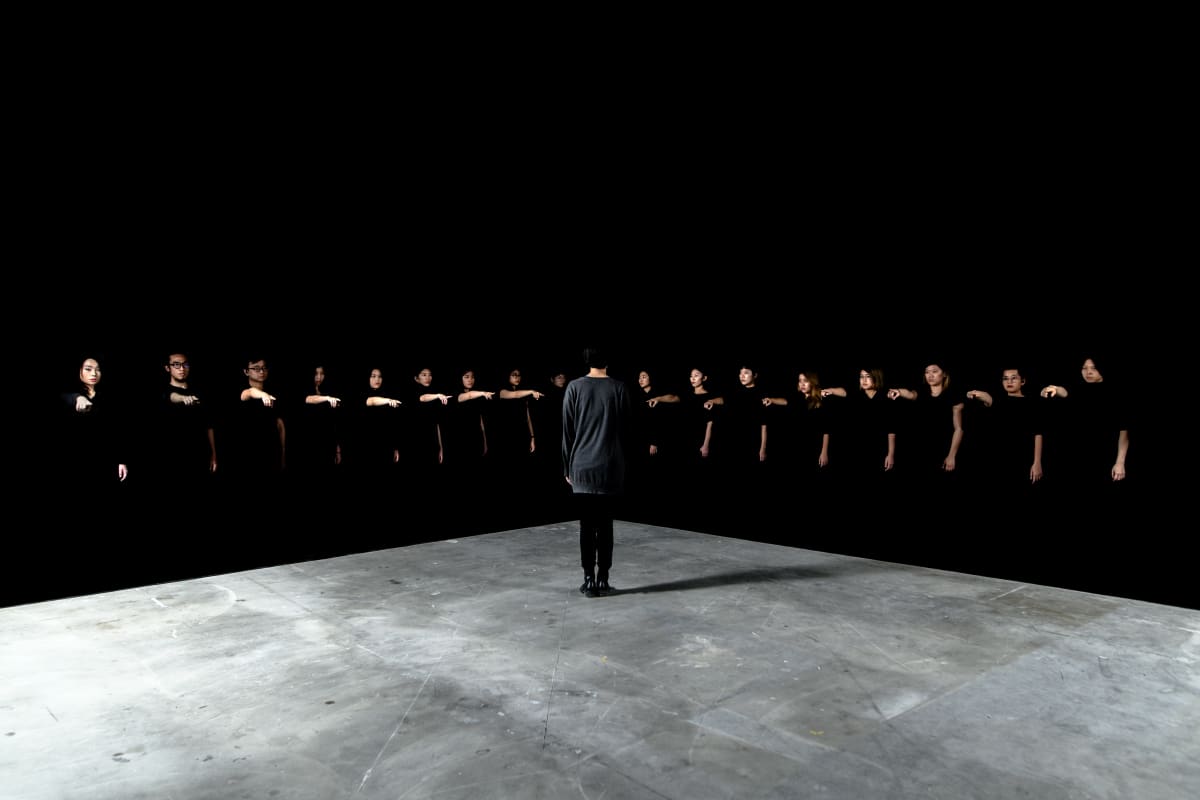Tomorrowland: Yuan Goang-Ming Solo Exhibition
Tomorrowland attempts to project an imaginary future that pivots around German philosopher Heidegger’s concept of “being-towards-death.” Drawing from personal life experiences, Yuan Goang-Ming transforms the everyday into different viewing experiences. Since 2000, his focus has shifted to the city and globalization, from individual to social and global issues. But his practice continues to delve into the question that confounds humanity: Why do we live? Why do we exist?
Living in an interconnected economic system, we are not exempt from the wave of globalization. We may very likely be forced to relocate in the foreseeable future due to economic, political, or climatic factors. So where exactly do we call “home”? The idea of “home” seems to be more fragile, fluid, and expanded now more than ever. Home, as the preliminary space where one learns to build relationships, awareness, and identity, is not only a physical living space, but also a sanctuary. "Home" in today's world is undergoing a drastic change, both on physical and psychological levels. This change has profoundly influenced the artists of our time, including Yuan Goang-Ming. His imagery is often pregnant with a sense of illusion and fictionality that allows his work to linger in a state of non-place.
In Yuan's new work Tomorrowland, an empty amusement park stands quietly in the breeze, moments before being blown apart by a sudden explosion. After the collapse of the Soviet Union in the late 20th century, the Cold War ended and world peace seemed to have been restored. But now the world has plunged into greater turmoil. In the post-Cold War era, a peaceful life is only a facade, behind which such challenges lurk: environmental degradation, financial crisis, wealth inequality, illegal immigration, and energy crisis. The beginning of a different war dawns. No longer physical, this war insidiously percolates into our life.
Meanings of Tomorrowland are slowly unveiled in the new works on view in this exhibition. Blinding bright light that symbolizes the flash of a nuclear explosion, the air raid drill that continues to take place in Taiwan even after the lift of martial law, Disneyland that represents globalization and capitalism, the rising number of migrant workers in Taiwan, and finally the concept of forced displacement in the new work Towards Darkness. Juxtaposed together, these works highlight the inevitable conflicts that we are faced with in a globalized world. Yuan is known for exploring possibilities in imagery by breaking free from old forms. In the immersive live exhibition Towards Darkness, a lightless space evokes the human embryonic stage, while hinting at the social issues touched upon in this exhibition. As French philosopher Gaston Bachelard once said, some imagery can only be experienced through being directly in its existing presence. This experience, much like walking into a black hole, could perhaps lead us towards a primordial state, allowing us to verify our existence from within.
Yuan Goang-Ming
Combining symbolic metaphors with technological media, Yuan Goang-Ming's work expresses the state of contemporary existence, and explores the human mind and consciousness. Before 2000, his practice revolved around personal experiences and the transformation of the everyday into new viewing experiences. Beginning in 2000, he shifted his focus toward the city and globalization. Disappearing Landscape (2007) combines video art and cinema, displaying the fascinating, theatrical everyday in three-channel video installations. His 2014 solo exhibition An Uncanny Tomorrow questions the environment we inhabit in a globalized context, pondering the anxieties and apprehensions of modern people.
Yuan Goang-Ming has exhibited internationally, including Biennale de Lyon: La Vie Moderne, France (2015); Fukuoka Asian Art Triennale, Japan (2014); the 7th Asia Pacific Triennial of Contemporary Art, Australia (2012); Singapore Biennale (2008); Liverpool Biennial, U.K. (2004); Auckland Triennial, New Zealand (2004); the Taiwan Pavilion at the 50th Venice Biennale, Italy (2003); the 2nd Seoul International Media Art Biennale, Korea (2002); and 010101: Art in Technological Times at the San Francisco Museum of Modern Art (2001). His work is housed in public and private collections of art museums and institutions domestic and abroad.















